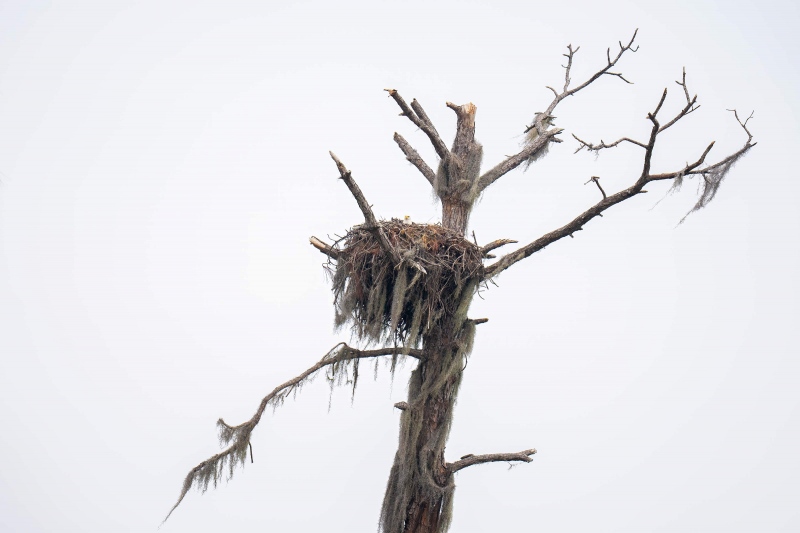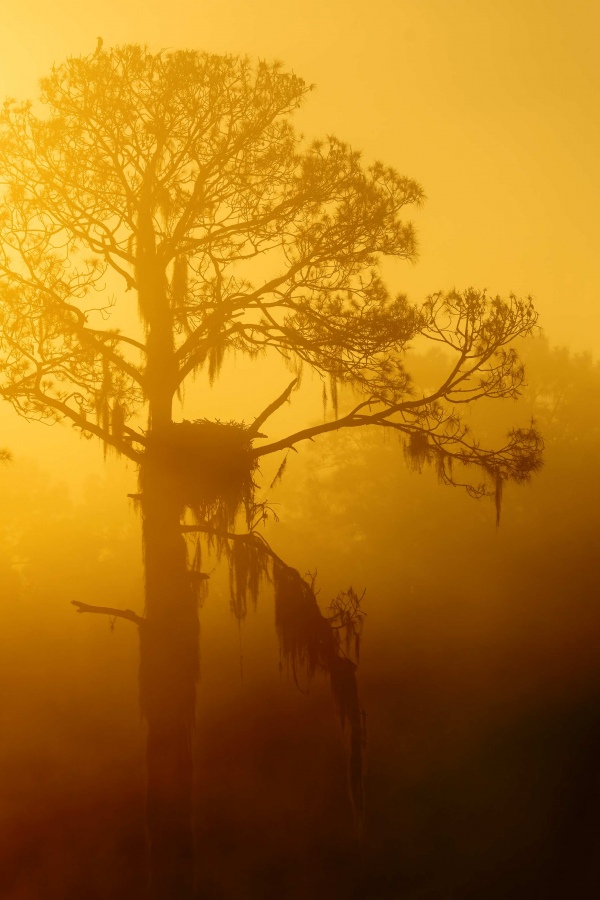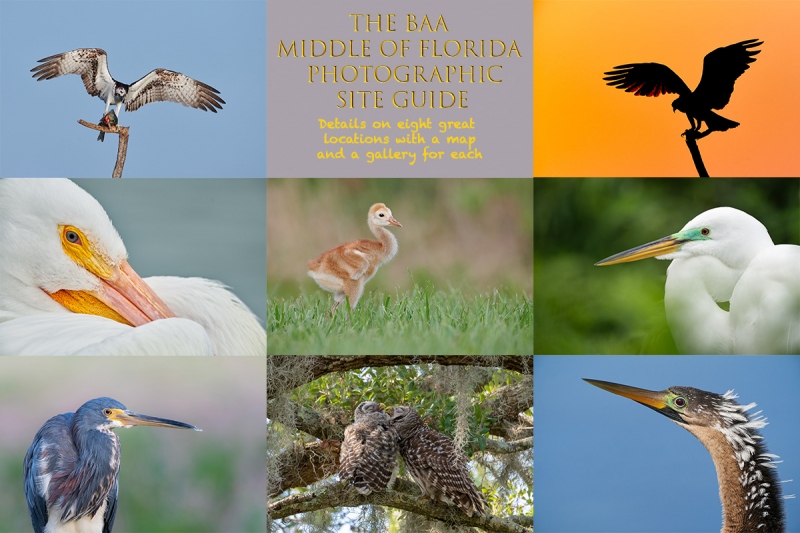Canon EF 100-400mm f/4.5-5.6L IS II USM
BAA Record-low Price!
Neal McEwen is offering a Canon EF 100-400mm f/4.5-5.6L IS II USM lens in excellent condition for a BAA record-low by far $1099.00. The lens was recently serviced by CPS with the 11-Point EF Lens Maintenance Service. The sale includes the original box and packing materials, the front and rear lens caps, the tripod collar, the lens hood, the carrying case with strap, and insured ground shipping via major courier to lower-48 US addresses only. Your item will not ship until your check clears unless other arrangements are made.
Please contact Neal via e-mail or by phone at 1-404-326-0505 (Eastern time zone).
This incredibly versatile zoom lens — with its amazing .98-meter close focus — was my favorite Canon telephoto zoom lens ever. By far. It is easy to hand hold, great for tight portraits, for birds in flight, for quasi-macro stuff, and lots more. For flight, it is fabulous with an EOS R, R5, R6, or R7! This lens sells new for $2399.00 so you can save a handsome $1300.00 by grabbing Neal’s lens ASAP. artie
What’s Up?
Monday morning dawned cloudy-dark; didn’t head down to the lake till about 8:00am. I worked a small flock of Cattle Egrets from the car with the handheld 400mm f/2.8 and amazingly, got a few nice flight images. Then I hung out at the Vulture Trees for a while. Today, the Black Vultures predominated. I tried some high ISO flight. Then I made a few snaps of the eagle on eggs. I kept 16 images out of 280. The f/2.8 aperture comes in quite handy on dark days.
There have been six or seven ILE work trucks down by the lake each morning tidying up nature. Last week they cut down a tall Cabbage Palm trunk with several Red-bellied Woodpecker nest holes. In spring and summer, it served daily as an Osprey breakfast perch. And two years ago, a young pair built a practice nest atop it. On Sunday past, they cut down a live Cabbage Palm that had been growing on a slant. Yesterday, they used a large brush hog machine to shave the vegetated western slope of the canal between the South Peninsula and the South Field. Bye-bye nesting and shattering habitat for birds and wildlife, feeding areas for birds, bugs, and Marsh Rabbits, along with thousands of wildflowers.
Concerned that they might cut down the three dead Vulture Trees or even the eagle nest tree, I e-mailed ILE’s Public Works Superintendent explaining the value of standing dead trees as places for birds and other wildlife to feed, nest, rest, and hunt from. He wrote back stating that his job was to do exactly what the board of directors told him to do. So much for educating folks.
Today is Tuesday 13 December 2022. The forecast for this morning is for clear and sunny with a breeze from the north. I will head down to the lake early to work the backlit Vulture Trees again. This blog post took less than an hour to prepare and makes two hundred sixty-one days in a row with a new, educational post just for you. Wherever you are and whatever you are doing, I hope that you too have a great day.
Please remember to use the B&H and Amazon links that are found on most blog pages and to use the BIRDSASART discount code at checkout when purchasing your new gear from Bedfords to get 3% back on your credit card and enjoy free second-day air FedEx. Please, also, consider joining a BAA IPT. You will be amazed at how much you will learn!
You can find some great photo accessories (and necessities, like surf booties!) on Amazon by clicking on the Stuff tab on the orange/yellow menu bar above. On a related note, it would be extremely helpful if blog-folks who, like me, spend too much money on Amazon, would get in the habit of clicking on the Amazon logo link on the right side of each blog post when they shop online. As you might expect, doing so will not cost you a single penny, but would be appreciated tremendously by yours truly. And doing so works seamlessly with your Amazon Prime account.
Please remember that if an item — a Delkin flash card, or a tripod head — for example, that is available from B&H and/or Bedfords, is also available in the BAA Online Store, it would be great, and greatly appreciated, if you would opt to purchase from us. We will match any price. Please remember also to use my B&H affiliate links or to earn 3% cash back at Bedfords by using the BIRDSASART discount code at checkout for your major gear purchases. Doing either often earns you free guides and/or discounts. And always earns my great appreciation.
Brand-New and As-Good-As-Ever Bedfords BAA Discount Policy
Folks who have fallen in love with Bedfords can now use the BIRDSASART coupon code at checkout to enjoy a post-purchase, 3% off-statement credit (excluding taxes and shipping charges) on orders paid with a credit card. The 3% credit will be refunded to the card you used for your purchase. Be sure, also, to check the box for free shipping to enjoy free Second Day Air Fed-Ex. This offer does not apply to purchases of Classes, Gift Cards, or to any prior purchases.
Money Saving Reminder
Many have learned that if you need a hot photo item that is out of stock at B&H and would like to enjoy getting 3% back on your credit card along with free 2nd Day Air Fed-Ex Air shipping, your best bet is to click here, place an order with Bedfords, and enter the coupon code BIRDSASART at checkout. If an item is out of stock, contact Steve Elkins via e-mail or on his cell phone at (479) 381-2592 (Central time). Be sure to mention the BIRDSASART coupon code and check the box for Free Shipping. That will automatically upgrade to free 2nd Day Air Fed-Ex. Steve has been great at getting folks the hot items that are out of stock at B&H and everywhere else. The waitlists at the big stores can be a year or longer for the hard-to-get items. Steve will surely get you your gear long before that. For the past year, he has been helping BAA Blog folks get their hands on items like the SONY a 1, the SONY 200-600 G OSS lens, the Canon EOS R5, the Canon RF 100-500mm lens, and the Nikon 500mm PF. Steve is personable, helpful, and eager to please.
Important Note
As an Amazon Associate, I earn a small percentage when you purchase from Amazon after using any of the Amazon links on the blog (including the logo-link on the right side of each blog post page). My affiliate link works fine with Amazon Prime and using it will not cost you a single cent. Huge thanks, BTW 🙂


Gear Questions and Advice
Too many folks attending BAA IPTs and dozens of photographers whom I see in the field and on BPN, are — out of ignorance — using the wrong gear, especially when it comes to tripods and more especially, tripod heads. And the same is true in spades when ordering new camera bodies or lenses. My advice will often save you some serious money and may help you avoid making a seriously bad choice. Please know that I am always glad to answer your gear questions via e-mail. If you are desperate, you can try me on my cell at 863-221-2372. Please leave a message and shoot me a text if I do not pick up.
|
|
|
This image was created on 12 December 2022 down by the lake near my home at ILE. Seated in the driver’s seat of my SUV, I used the handheld Sony FE 400mm f/2.8 GM OSS lens and The One, the Sony Alpha 1 Mirrorless Digital Camera). The exposure was determined via Zebra technology with ISO on the Thumb Dial. ISO 1600. 1/2000 sec. at f/2.98 (wide open) in Manual mode. When evaluated in RawDigger, the raw file brightness was determined to be dead-solid perfect (ho hum). AWB at 8:41:43am on dark cloudy morning. Tracking: Spot S AF-C with Bird Face/Eye detection enabled performed to perfection. Be sure to click on the image to enjoy a high-res version and see the bird in the nest. Image #1: Bald Eagle — adult on eggs. December 2022, after Hurricane Ian |
The Depth of Field Question (Again)
In the It Was The Frog’s Fault! blog post here, referring to the bird/tree-scape silhouette (created with the wide open 400mm f/2.8 GM lens), I asked:
Why was there no need to stop down two or three stops to render the trees and birds sharp?
Image #1 above was also created at f/2.8. Why was everything sharp at f/2.8?
|
|
|
This image was created on 27 December 2021 down by the lake near my home at Indian Lake Estates, FL. I used the hand held Sony FE 200-600mm f/5.6-6.3 G OSS lens (at 332mm) and The One, the Sony Alpha 1 Mirrorless digital camera. ) The exposure was determined using Zebra technology with ISO on the Thumb Dial. ISO 640. 1/5000 second at f/8 (stopped down 2/3-stop) in Manual Mode. AWB at 7:41:58am on a foggy morning. RawDigger showed the exposure to be perfect. Tracking: Spot S AF-C with Bird Face/Eye Detection performed perfectly. Be sure to click on the image to enjoy a high-res version. Image #2: The Bald Eagle nest tree backlit — December 2021, before Hurricane Ian
|
Hurricane Ian
Compare the nest tree in Image #1 with the nest tree in Image #2. It is hard to believe that it is the same tree. Hurricane Ian blew off the crown of the tree above the nest. I am glad that the birds opted to re-nest. Last year, as first-time parents, they had one egg and fledged the chick. It is likely that they laid two or three eggs this year. The birds were on eggs on November 13. Eagle eggs hatch one to several days apart depending on when they were laid. The first egg hatches consistently after 35 days of incubation. Time will tell. I will be on the plane to San Diego on 19 December.
Eagle chicks often kill their siblings during the first few weeks in the nest. At seven to eight weeks of age, the young eaglets will begin exercising their wings by flapping them vigorously. Soon afterwards they begin branching, hopping to branches near the nest. Most young eagles fledge at about 12 weeks and hang around the nest for several months. As I get home from San Diego on 24 January, fly to Anchorage for the Homer IPTs on 18 February, and get back to ILE late on 9 March, I will miss lots of action at this year’s nest.
|
|
The BAA Middle of Florida Photographic Site GuideYou can purchase your copy here in the BAA Online Store. |
The BAA Middle of Florida Photographic Site Guide
126 pages, 87 photographs by Joe Przybyla and Arthur Morris.
The PDF for this e-Guide is an electronic download sent via e-mail.
Purchase your copy here in the BAA Online Store.
I had thought about doing a guide to some of the great but little-known photo hotspots around central Florida for about a decade, but those plans never came to fruition. I met Joe online in the Avian Forum at BirdPhotographer’s.Net about two years ago. Joe’s photography has improved tremendously over the past few years; he credits the BAA blog, my books and PDFs, and his participation on BPN. The one thing that I learned right from the get-go about Joe is that he is a hard and tenacious worker, always striving to improve his skills and to grow his knowledge base. As he knew of more than a few good spots in central Florida, I broached the idea of us doing a photographic site guide that covered many of the little-known photographic hotspots from Brandon to Lakeland to Joe Overstreet Road to Indian Lake Estates (my Florida home for the past 20 years or so). After more than many, many dozens of hours of effort, The BIRDS AS ART Middle of Florida Photographic Site Guide is now a reality. Thanks to Joe’s wife Dottie for her review of our writing. We all learned once again that writing is a process, a back and forth process. All thanks to the white pelicans of Lakeland. Here are the locations that are detailed in this e-Guide:
- Indian Lake Estates: Sandhills Cranes with chicks and colts, lots of vultures, and Ospreys up the kazoo!
- Gatorland, Kissimmee: Learn to make great images of wading birds in a cluttered rookery.
- The Brandon Rookery: Great for nesting Wood Storks, Great Egrets, and more.
- Circle Bar B Reserve, Lakeland: Here you will find a great variety of avian subjects in a great variety of habitats.
- Lake Morton, Lakeland: There are lots of silly tame birds here including and especially American White Pelican during the colder months.
- Lake Mirror, Lakeland: Tame Anhingas, Limpkins, and a zillion White Ibises at times.
- West Lake Parker, Lakeland: Here you will have a chance for two difficult birds, Snail Kite, and Purple Gallinule.
- Joe Overstreet Road, Kenansville: Crested Caracara, meadowlarks, Loggerhead Shrike, and much more on the fenceposts and barbed wire.
Each location includes a map, a detailed description of the best spots, best season, light and time of day instructions, the expected species, and an educational and inspirational gallery that is designed to open your eyes as to the possibilities.
You can purchase a copy here in the BAA Online Store.
Typos
With all blog posts, feel free to e-mail or to leave a comment regarding any typos or errors.


















#2 rocks and my old eyes still found twenty bird at the very top of the tree. The head of the eagle just popping out over the side of the nest is cool but #2 wins the prize for me.
Image #1: Bald Eagle is interesting and Image #2: The Bald Eagle nest tree is a little too dark and not as easy to see things.
So sorry to hear of the habitat destruction taking place there. I know trees are harvested for lumber and other forestry management goals but I can’t imagine cutting a tree for much of any reason other than it posing a danger to life or property. Surely cutting a tree with an active Bald Eagle nest is a crime? If not, it should be. Best of luck in dealing with those knuckleheads.
Yes, a crime. They routinely destroy fresh water vegetation here. A few years ago I called FWC and reported that. They came, and said, “It’s OK.”
Thanks, a